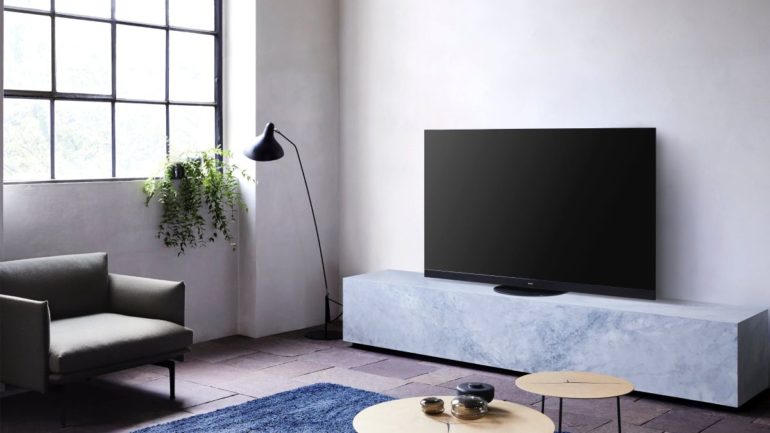As we look back on a bumper year for TVs, with huge expansions to 8K TV ranges, implementations of ambient light sensors to improve HDR viewing, and the usual incremental picture improvements, it’s worth paying mind to one TV feature brought back from the dead: the swivel stand.
Panasonic made much of swivel functionality on TV stands for 2020’s OLED TV range, allowing viewers to tweak the viewing angle with ease. The HZ1000, HZ1500 and HZ2000 – though not the lower-end HZ980 model – all boast a swivel stand, meaning that turning a TV screen to face a specific seat, chair, or spot in the room is a simple as a little prod in the right direction.
Many of us will know the horrors of installing a TV in a position that turns out to be less than desirable, especially if it’s wall-mounted with little recourse to undo our mistake (wall brackets that allow for some free movement being the exception to this).
Even a TV set on a counter, though, can be a hassle to shift or move, given it usually requires shifting quite heavy hardware (those 75-inch TVs are bulky, OK) or even moving the furniture it rests on. Suffice to say, while the extra effort is worth it to perfect your TV screen’s placement in your home, it’s not a long-term solution to tweaking screen positioning on the fly.
Back to the future
Panasonic has a long history of swivel stands on its screens, with many of its plasma TVs back in the day featuring the useful functionality. Even its LCD TVs, though, have featured it in the past, from the 26-inch LXD52 we tested in 2005 to the 50-inch EX750 we reviewed in 2017.
It hasn’t been a standardised piece of kit for some time, though, while being noticeably absent from Panasonic’s TV ranges in the past couple of years. 2020, though, was the year that it came back in style.
Panasonic’s key mission is to make home cinema screens actually feel cinematic, something matched by the controlled picture processing and exceptional motion control found on its high-end TVs – as well as its support for Filmmaker Mode, a picture setting that reduced processing to better represent the image ‘as intended’.
But placing TVs in a home that isn’t conducive to ideal viewing conditions – say, because of the shape of your living room, where furniture is placed, or because you’re renting and don’t have the option of drilling into a wall – can cause a real problem.
The swivel stand, then, is a way to add more control over your new screen, and ensure you get a cinema-like immediacy of image, one that is always directed right in your direction. It may not get the same kind of press attention as OLED panels or fancy HDR formats, but the flexibility and freedom of Panasonic’s free-wheeling screens makes it one of our favorite TV features to have resurfaced for 2020.
We can only hope Panasonic sees fit to continue implementing it in future TV ranges, though we’ll be sure to hear more at the CES 2021 expo in early January.



